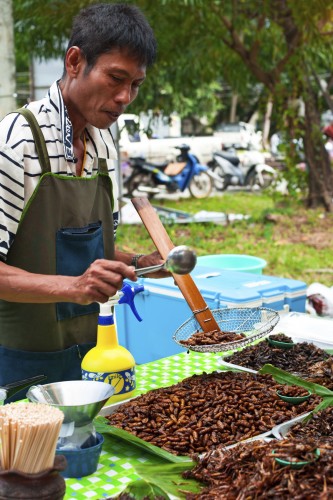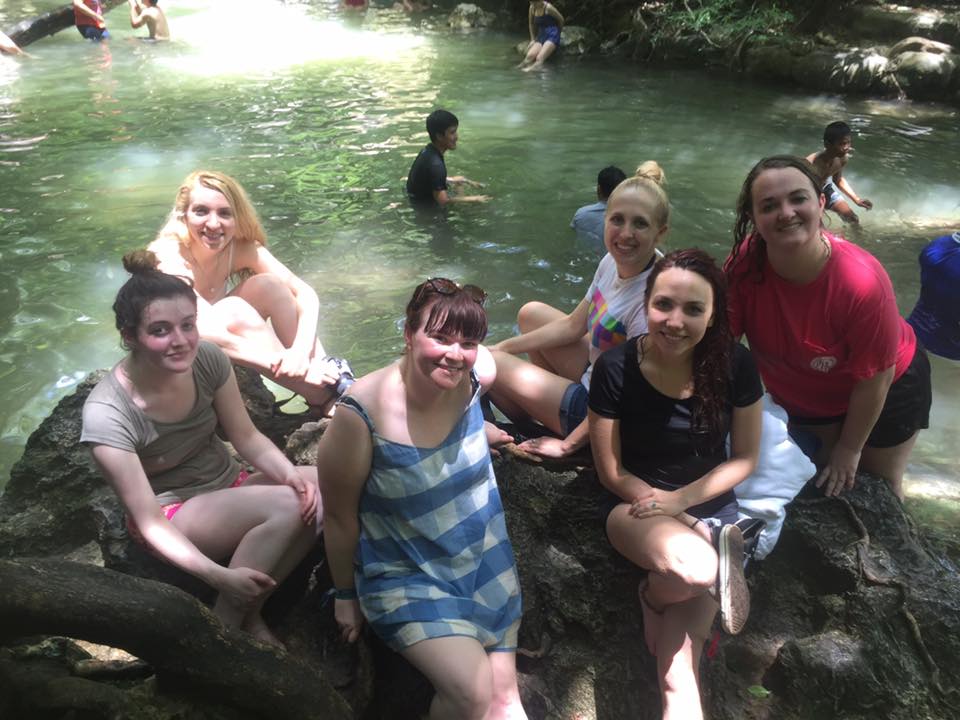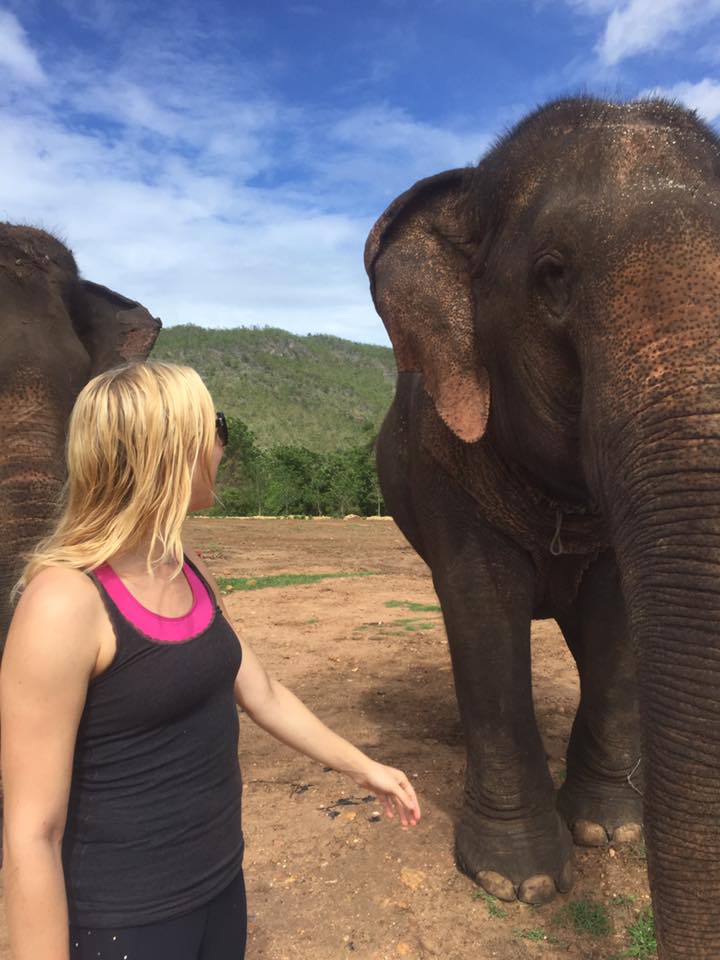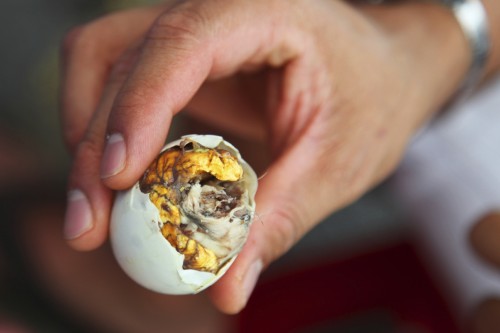One of the best things about teaching English abroad is that there are so many destination options! With a high demand for TEFL teachers all over the world, the list of where you could teach is endless. So, how do you decide where to start TEFLing? Start by asking yourself these questions…
Tag: teaching English abroad
Five steps to teaching English abroad
So, you know that you’re ready for a change; a brand new start. But you’re not sure what shape that new start should take – should you get a new job? A pet to care for? How about move to a new town? Take up an exciting new hobby? Or move to the other side of the world to experience an exciting new country and gain skills for life teaching English abroad?
Teaching English overseas is an unbeatable way to discover all the wonders of our vast world, whilst getting under the skin of a brand new culture in a way no tourist would be able to. Uprooting and moving to a new country may sound scary, but if you’re ready for a new adventure it could be just what you need – and the process can really be quite straightforward.
We’ve distilled the journey of teaching abroad into a simple five-step plan; it really can be this simple.
Do your research
As with anything in life, it’s important to approach TEFL with your eyes open and with a realistic point of view. There are different requirements for TEFL depending on what your aims are: for example, to take on a paid job you may need a university degree and a passport from an English-speaking country. Also, when you’re handing over money to a company to help you achieve your TEFL dreams, you’ll need to make sure they’re everything they’re cracked up to be.
Unfortunately there are plenty of dodgy agencies and companies around, but you needn’t get caught out; the internet is great for a lot of things, and digging up dirt on dodgy companies is one of them! Check out teflcoursereview.com for detailed course reviews, and sites like Trustpilot and Reviews.com, give your chosen companies a ring and have a chat to them so you know you’re buying wisely.
Get TEFL qualified
This is an essential first step to have in place when you start getting excited about where you want to teach. Not only will you need to know your stuff, but most overseas establishments will ask for a qualification of at least 120 hours too. There are lots of different types of TEFL course ranging from 120 hour online courses to heavy duty CELTA qualifications, but unless you’re seriously looking to make a career out of TEFL, you’re probably best sticking with an online course that can be completed relatively quickly in your spare time. Our 120 Hour Online TEFL Course is accredited by the ODLQC and can be studied anywhere, on any device – and you won’t pay through the nose. You could qualify in as little as six weeks with the help of an expert tutor, so that you’ll feel totally prepared for the reality of teaching English overseas.
Secure your position
Now, it’s time to decide what route you want to take in your TEFL journey. Are you ready to uproot for a year or more with a paid teaching job? Or would you simply like to visit a new location for a few months whilst getting some great experience for your CV? There’s all sorts out there for aspiring teach-and-travellers; here at i-to-i we offer paid jobs in China, Thailand, Indonesia and Spain, as well as a series of fully supported TEFL Internships that offer up to six months of hands-on teaching experience in colourful locations like Thailand, Colombia and South Africa.
Great placements will usually offer accommodation included in the price you pay (so that’s one less thing to sort out) and you may even receive free meals during teaching at your school. With paid jobs, it’s really important to thoroughly read your contract to make sure you’re happy with all the stipulations, and to raise any concerns before you’ve signed.
The boring (but important) bits
All this preparation will be for nothing if you don’t remember to tick all the appropriate boxes before you travel, so don’t put off getting the ‘boring bits’ sorted. Vaccinations are a must when you’re travelling to a new country, so get booked in nice and early with your doctors and be prepared for a bit of extra expenditure. Your doctor can help you organise any prescription medicines as well.
Visas are also essential; depending on where you’re from, you need particular paperwork from the government of your host country to confirm that you’re able to work in the role you’ve taken on. Assistance with your visa is available from I-to-i when you travel with us, so don’t be put off by the thought of all the admin. Failure to sort your visa out before you travel could easily result in being refused access to your chosen country – and working illegally will cause problems further down the line. Then – last but not least – you’ll need to get your flights booked!
Get packed & go!
You’re nearly there! Just remember that over packing will only cause you a hassle once you touch down. Pack, unpack, re-pack and do this all again until you’ve slimmed down to the bare essentials. You may want to get in contact with any fellow travellers if applicable to see if there’s anyone you can make the journey with, and remember to stay hydrated on your flight so you feel fresh when you touch down. Your adventure is just beginning!
We hope that this simplified list has given you a more realistic idea of how easy teaching English abroad can actually be – there’s nothing to it!
Kanchanaburi, Thailand: an insider’s guide
I am falling in love with this city, and I want to give you a piece of it! I have compiled a list of tips for you based on my experiences so far. Hopefully you can use them someday if you’re ever able to visit. If not, you can live vicariously through me.
Backpacker’s Strip
If you’re traveling through Kanchanaburi, then you absolutely HAVE to stay on the backpacker strip (also known as foreigner’s road) in the heart of the city. There are many quaint and affordable guesthouses, as well as a variety of food and bars. On our first night there the westerners were craving pizza, so we stopped by Bell’s Pizzeria and it hit the spot. However, if you’re just passing through and want some good Thai food there are many restaurants you can try, including On’s Thai Issan or Nut’s Restaurant. I spent my first two weekends in Kanchanaburi town, and I stayed in two different guesthouses. Blue Star Guest House was absolutely beautiful and very affordable. You walk outside of your room and you are surrounded by nature. However, I would not recommend this place if you are looking for a hot shower, Wi-Fi, and a spacious room. The accommodation is very basic and you also run the risk of some “friends” in your room. I found a bug in my blanket in the morning! Otherwise the experience was wonderful. The next weekend I stayed at Noble Night, which was only a little more expensive and very nice. There is a pool, more space in the room and bathroom, Wi-Fi, a hot shower, and a comfy bed. I would highly recommend Noble Night and would definitely go back again. Other recommended guesthouses are Sam’s guesthouse and Tara Bed & Breakfast.
Waterfalls
Kanchanaburi is known for its plethora of beautiful nature spots, and I can attest to this. By tuk-tuk or taxi, you can get to the Erawan waterfalls in about an hour. Sai Yok is also an option for waterfalls, but my travel group chose to go to Erawan. Be sure to bring some cash, the entrance fee is 300 baht (8.50 USD or 6.50 British Pounds). Also keep in mind that if you are going during Thailand’s hot season (March-May) there is a chance that the waterfalls will be dry, so check beforehand. I had a blast at Erawan, but I definitely ran into some surprises that I was not prepared for. First off, dress appropriately. The Thai culture has a strict dress code and they do not allow bikinis or men without a shirt. I wore sandals expecting an easy walk, and I was absolutely not prepared for a rigorous hike. Wear good hiking shoes or you’ll be slipping and falling like me, oops! Another thing I was not prepared for was the fish in the water. Yes, real fish, and they’re not shy. Don’t get in the water unless you’re ready for a swarm of fish to swim up to you and nibble (gently) at your feet. It is also important to pack lightly if you’re going to hike all the way up to the 7th waterfall. The hike is an hour up and an hour down. Overall, Erawan was a beautiful experience, and I hope to go back again.
WW2 History
Kanchanaburi is also full of World War II History, including Death Railway and the River Kwai Bridge. I recommend starting your day at the Thailand-Burma Railway Centre and then catching the train and on the Death Railway from Kanchanaburi, over the River Kwai Bridge, through the Wampo Viaduct, and all the way to Hellfire Pass. At the end of the train is Hellfire Pass where you can find the Hellfire Pass Memorial Museum. To give you a little backstory, during WWII Australians and English prisoners of war were captured by the Japanese and were forced to build the Death Railway, which the Japanese were hoping to use to get materials to Burma. It is a fascinating piece of history, and also offers some beautiful scenery if you go by train. My group stopped at the Krasae Cave instead of going all the way to Hellfire Pass on the train, and that was a really cool experience. There is a giant gold Buddha in the center of the cave that tourists often pray to for good luck. This is also a great place to get off and take some pictures of the railway and the river.
Elephants World
This past weekend I visited Elephants World in Kanchanaburi, which was my favorite experience yet. Elephants World is a sanctuary for retired elephants, and it is a safe place for the elephants. Their motto is “Where we work for the elephants, and the elephants not for us”. They are a non-profit, and the only place I would recommend in Kanchanaburi for interacting with elephants. You can feed them, bathe them, and watch them give themselves mud baths and swim. The staff is also friendly and really cares about the animals. I highly recommend Elephants World!
What it’s like doing TEFL in stunning South Korea!
Today, we’re interviewing the lovely Emina, who is living and teaching in super Seoul, South Korea. Jealous, us?!
Hi, Emina! Tell us a bit about yourself. Who are you? How old are you? Where are you from?
My name is Emina Dedic. I’m 27 years old, and originally from Bosnia. I am a former refugee, and first generation college graduate. I am a career student, writer, activist, and world explorer.
How do you usually spend your spare time?
I collect currency from all over the world and vinyl records. I regularly contribute to a variety of travel writing and educational blogs. I’m very passionate about community activism and do my best to contribute to my local community as much as I can. I’m an avid fashion and coffee enthusiast.
What’s your education history? College, degree, high school?
I have an associates and bachelors degree with a focus in Psychology from Charter Oak State College. I also have certificates in Victim Advocacy and Legal Investigation from Texas A&M International University, and Paralegal Studies from Georgia State University. Currently. I’m four classes away from finishing a BA in English while simultaneously working on my MBA as well.
Where are you now?
Currently, I live in Seoul, South Korea. I teach at a private academy. I’m currently in my second year, and I am loving it!
What is it that drew you to teaching English abroad?
I have wanted to teach English abroad for about five years, ever since I saw my school career services website advertising open positions for the jobs online. I was held back from going since most places a degree is a requirement. I was very hesitant to take out student loans, so it took me longer than normal to obtain my degree, which is a requirement in this industry. While I worked a job and went to school full-time, I kept daydreaming constantly about how one day I would wind up where I am today. My patience and determination paid off, however, because now I’m living a dream come true.
Which TEFL course did you complete?
I complete the 120 hour online course. However, I also did some specialist modules. Teaching Business English, Teaching to Online Learners, Teaching Business English, Teaching One-on-One, and Teaching With Limited Resources were some of the skills related subjects I studied. I also took country specific courses in Teaching in Italy, China, Poland, Japan, and South Korea.
Why did you choose your teaching location? Do you feel you made the right decision?
I chose South Korea because the nation has a reputation for being safe and a comfortable place for new teachers. The benefits are also nice. Overall, safety, security, and reliability were the main factors.
Where are you teaching? How are you finding the experience?
I have been teaching kids of many different ages, usually in the range from 4 years old to about 11. I work at a private academy. I am really enjoying the experience, but it does get challenging at times.
What’s your favourite thing about living where you do?
Other than having a job that I love, I’m very close to Olympic Park and to a dog café I adore called Lucimon. There is a Pyrenees dog there named Podong I really love. I love grabbing some tea and hanging out with him while I work on writing travel articles or grading assignments.
Are there any challenges you’ve faced? How did you overcome them?
I really had no prior experience with teaching children, so the adjustment process was a bit hard for me. Figuring out how to discipline properly as well as teach students in effective ways in different class sizes and age levels also proved difficult. Sometimes, it was also hard to juggle a personal life along with such a demanding professional life.
What advice would you give someone wanting to start out teaching English abroad?
Go for it, but don’t jump into it blindly. Do your research. Negotiate your pay. Get TEFL certified, and make sure any contract you look at is valid. Know your rights and employment laws wherever you work. Most opportunities are legitimate, but don’t allow yourself to be taken advantage of, because scams do still exist and there are bad schools out there.
Are you the same person as a year ago?
I would like to think that I am. I’d like to think I’m the same person, just a bit more aware about international issues, female traveling issues, what having to adjust to a culture is like when you’re completely alone, etc. I try to use my experiences to better myself as a person and use those tools to improve my community. I definitely learned I’m stronger than I thought I was.
What three things would you choose to take to a desert island, and why?
Sunscreen (safety first), emergency supplies (in case I end up stuck or sick), and a really great book with a pen inside and some blank pages in the back so I could jot down some notes for an article I’d like to publish about the trip later.
Thanks for your time, Emina! It was great chatting with you. All the best in your future teach and travel adventures!
Top 10 crazy Thai foods
Imagine the scene: you’ve just arrived in beautiful Thailand, and are wandering leisurely around Bangkok’s packed-out Khao San Road taking in the exciting new sights and smells. Fire dancers mesmerise with their daring and dangerous stunts; street sellers hawk neon t-shirts and knock-off sunglasses; a smiling local approaches you with a tray piled high with enticing looking fried snacks.
You’re peckish at this point, so you catch their eye with a smile. Hand over your 20 baht or so, and receive a crackling bag of crunchy treats to nibble. Raise one to your mouth, and catch a glimpse before you bite – what is this?! A black form with spindly antennae, hard and shiny stomach with pointy limbs crossed over… all speckled with grains of salt. Little did you know, fried cockroaches are considered a delicacy in Thailand; and if you’re brave enough to crunch your way through its satisfying, salted-popcorn flavour you’ll find out why!

Thailand, along with many other Asian countries, is known for its wild selection of unusual foods that seem a bit… well, gross to the western palette – and fried bugs pale in comparison. That said, their resourcefulness in food preparation could serve as a valuable lesson to us in making the most of what’s available and minimising waste; so read on for some truly – let’s say, imaginative dishes. Here are our top ten mad meals from the Land of Smiles.
1. Kai Khao
Let’s start with something you may have heard of. A delicacy across many Asian countries, here’s a beer snack with a difference. Sit down at a pop-up bar and order an icy bottle of Chang beer in Thailand, and chances are you may see kai khao on the menu. Don’t be fooled by appearances, though – this is no innocent boiled egg.
Kai khao is, put simply, an unborn baby duck. Crack open the pretty blue eggshell and you’ll be greeted by a veined, pale, gelatinous mass complete with large yolk sac, tiny feet and eyes and even the beginnings of feathers. Locals love the intense poultry flavour and varied creamy-crunchy texture – chew it all down in one if you can face it!
2. Som Tam Hoy Dong
The delicious, fresh, tangy and spicy som tam salad is a staple on many Thai restaurant menus, but the hoy dong in this particular recipe adds a none-too-appetizing twist. Take shredded green papaya, plenty of chilli, kaffir lime, garlic and crushed roast peanuts, and finish it off by adding some deliciously pungent fermented oysters. And then, drown the whole lot in a ruby red blood sauce. Serve with rice. Yum!
3. Durian fruit
This large, spiky-shelled monster is often called ‘the king of fruit’ – but from what we’ve heard, the jury is still out on that one. Banned in many public spaces and on public transport across Southeast Asia, the durian fruit looks (and smells) pretty threatening. You’ll smell it a mile off when browsing fruit markets: the stench is said to be like rotten onions, turpentine or raw sewage depending on who you listen to.
If you can get past the formidable spiked exterior and stomach-turning scent though, the rewards are apparently worth it: the soft fruit inside has a delicate, creamy consistency and a rich, sweet, almond-y flavour.
4. Goong Dten
Another one that definitely isn’t for the faint of heart. Goong dten roughly translates as ‘dancing shrimp’, and this dish is perfect for culinary adventurers who are desperate to know what a mouth full of live shrimp feels like (we imagine squiggly).
Tiny, see-through live freshwater shrimp are put in a bowl where they toss themselves around with chopped green onion, chilli and spices (thanks guys) before being munched, still wiggling. They ‘pop’ between the teeth in a salty explosion that is meant to be really delicious. Would you be bold enough to try?
5. Bpaak Bpet
‘Nose to tail’ eating (scoffing the whole animal with the minimum of waste) has been a popular food fad in the UK for a few years now, but the Thais doubtless got there first. Bpaak bpet is a duck’s beak, a couple of which can be picked up for just a few pennies at plenty of street food stalls in Thailand. The animal’s bill is marinated in a delicious sweet soy sauce and then grilled.
Though the tough cartilage takes a lot of chewing, the rich, fatty meat inside is meant to be really tasty – just make sure it’s soft enough to swallow!
6. Larb Mote Daeng
This is another crunchy creepy crawly dish that is supposedly totally delicious – after all, why should anteaters have all the fun? Red ants are cooked in their thousands with their large white eggs to create a dark, shiny mass speckled with creamy blobs. Close your eyes and take a bite – we reckon the sweet and sour crunch of the ants mixed with the rich, wholesome taste of the eggs is impossible not to love!
7. Mok Huak
Ever felt the need to plunge your mitts into the garden pond and scarf down handfuls of wiggly tadpoles? Somebody in Thailand has, and that’s how mok huak came about. Get a big bucket of developing taddies (legs and all, if possible) and cook them up with green onions, spices, chilli… and a dash of fermented fish sauce (pla raa).
Bon appetit!
8. Luu Muu
On a Saturday morning, you may find yourself tucking into a hearty fried breakfast complete with black pudding, made of congealed pig’s blood. Sounds gross but tastes great, right? What about luu muu?
Offal and blood feature heavily in Thai cooking due to their commendable attitude about non-waste. Iron-rich blood can be extremely good for you, or extremely bad (heard of Streptococcus suis?) so approach this dish with caution. Raw, bright red pigs’ blood is mixed with a tasty spice mixture and served up over deep-friend crisp noodles and garnished with kaffir lime leaves and cab moo, fried pork skin similar to the pork scratchings you can get down the pub. The rich, iron-y flavour is meant to be quite bracing.
Let’s not forget the words of many an esteemed doctor, though: the consumption of raw blood is not advisable.

9. Bamboo rat
These toothy, oversized rodents are admittedly kind of cute, looking like a cross between mice and guinea pigs, and around the same size as the latter. They get fat on chomping through farmers’ bamboo stocks and as such are considered a bit of a pest. When you’re roaming around local markets, don’t be surprised to see a couple of these big lads locked up in cages awaiting their fate – a swift skinning and being roasted whole on a grill.
The meat is said to taste similar to pork but with an exceptionally fatty, chewy texture – for this reason, it’s usually served boiled up with veg and spices for a rich, meaty soup.
10. Laap
Back to the raw flesh and blood for a final hoorah – laap is quite similar to raw steak tartare, which is considered a bit of a delicacy in the west. This is another great way to make use of the whole animal when you’re eating – unspecified meat (whatever is to hand!) is minced up really finely with a generous helping of blood and mixed with pulverised cooked offal and skin. Mix with fresh herbs like galangal, kaffir lime and basil; whack in some fried onion and garlic, and a special dried spice seasoning paste. Serve up the dark red, quivering mass with some sticky rice. Delicious.
We hope you’ve enjoyed this brief tour around the culinary conquests of Thailand; and remember, you can always enjoy a pad thai if none of the above tickles your fancy.
Fancy sampling some of these mouth-watering morsels for yourself? Check out our epic two month Thailand TEFL Experience by clicking here.











